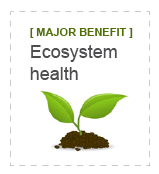Minimize the volume of and pollutants in rainwater runoff by maximizing green infrastructure.
Paula Kalinosky, Hydrologist, MN Pollution Control Agency: paula.kalinosky@state.mn.us and Joanne Boettcher, Stormwater Research Liaison, MN Pollution Control Agency: joanne.boettcher@state.mn.us , https://www.pca.state.mn.us/business-with-us/minnesota-stormwater-manual

- Developed by the MPCA and its public and private research partners in 2014, the Minimal Impact Design Standards (MIDS) calculator computes reductions for storm water volume, total phosphorus and total suspended solids of green infrastructure practices. Related design specifications for green infrastructure practices - such as bioretention (rain gardens), trees, green roofs, infiltration basins and stormwater reuse - are contained in the new Minnesota Stormwater Manual. Assuming the practices are designed, constructed and maintained as specified, a city's pollutant reductions using the MIDS calculator count toward the city meeting its required reductions under any existing Total Maximum Daily (pollutant) Load (TMDL) to local bodies of water.
- Low-impact development was simulated for an existing development in Lakeville, MN and several financial and environmental benefits were calculated. Enhancing Sustainable Communities With Green Infrastructure (U.S. EPA: 2014) provides the rationale and detailed guidance to help communities better manage stormwater while achieving other environmental, public health, social, and economic benefits. One clear benefit of infiltrating rain close to where it falls is the cost-shift from city-financed stormwater grey infrastructure to privately-financed green infrastructure.
- Urban Stormwater BMP Performance Assessment and Cost-Benefit Analysis (Capitol Region Watershed District: 2011).
- The National Green Values Calculator (Center for Neighborhood Technology: 2009) is a tool for quickly comparing the performance, costs, and benefits of green infrastructure to conventional stormwater practices. Estimates include annual and life cycle benefits of reduced air pollutants, carbon dioxide sequestration, compensatory value of trees, groundwater replenishment, reduced energy use, and reduced water treatment benefits.
- The Value of Green Infrastructure: A Guide to Recognizing Its Economic, Social and Environmental Benefits (Center for Neighborhood Technology & American Rivers: 2011) provides a framework to help communities measure and value in dollars the stormwater, air quality, energy, and other benefits that green stormwater infrastructure provides communities. See also Banking on Green: A Look at How Green Infrastructure Can Save Municipalities Money and Provide Economic Benefits Community-wide (American Rivers, American Society of Landscape Architects: 2012) and Harvesting the Value of Water: Stormwater, Green Infrastructure, & Real Estate (Urban Land Institute: 2017).
- Note that the low cost of road salt in MN - around $70/ton - ignores the downstream costs of chloride-based road salts, which rust cars, contribute to the erosion of bridges, and permanently poison water bodies and groundwater. Those salt costs are on the order of $1,400/ton. Thus spending money on interventions such as permeable concrete, to reduce road salt use, yields a high return-on-investment.
- 2009 state legislation chartered the development of Minimal Impact Design Standards (MIDS) based on a low impact development (LID) approach to stormwater management that mimics a site's natural hydrology as the landscape is developed. MIDS is a set of regulatory tools, modeling methods, ordinance templates, and development credits to promote the implementation of effective techniques that minimize the volume of and pollutants in rainwater runoff. Adoption of MIDS can be used to comply with the general state permit for construction stormwater, post-construction stormwater management, and MIDS can be used to achieve waste land reductions as specified in a TMDL.
- New state plumbing code rules taking effect in January 2016 provide for reuse of treated rainwater within buildings for toilet flushing, vehicle washing, industrial processes, water features, cooling tower makeup and similar uses.
- A ban on the use and sale in Minnesota of coal tar sealants - for parking lots, driveways, trails, school yards and the like - went into effect January 1, 2014.
- The MPCA issues Municipal Separate Storm Sewer System (MS4) permits, Construction Stormwater permits (for land disturbance over 1 acre), and Industrial Stormwater permits. These three stormwater regulatory programs administer a general permit (and in some cases, individual permits) that incorporates federal and state requirements for Minnesota stormwater management. Cities with impaired waters that are issued an MS4 permit and that have an approved Total Maximum Daily [Pollutant] Load (TMDL) plan must annually report progress toward meeting each applicable Waste Load Allocation (WLA).
Step 3 Recognition Best Practice for Category A cities
Category A, B and C cities: implement this best practice by completing any one action.
Increased stormwater runoff and associated water pollution are often a result of land use changes and urbanization. Cities with 10-15% of their land area in impervious surfaces begin to see impairments to nearby water bodies. This in turn compromises clean drinking water and fishable, swimmable waters that support plants, animals and our local quality of life. Using a low-impact development, such as a green stormwater infrastructure approach, pollutant loading from stormwater sources is minimized, water is managed on-site and infiltrated as much as possible in such a way as to mimic predevelopment hydrology, and water quality benefits are recognized in the receiving waters. Cost savings are typically realized through this approach, which treats rainwater as a resource and a quality of life enhancement of urban life, not as a problem to be dealt with in a linear 'send it down the river as fast as possible' manner that fails to use it as replenishment for local groundwater in the local water cycle.
Using a "skinnier street" design over time as street reconstruction is needed on low-traffic streets, cities can see the multiple benefits of decreased impervious area, more trees and infiltration footage, less polluted runoff to nearby bodies of water, more/better sidewalks, and decreased construction and maintenance costs.
Metric # 9: Stormwater
